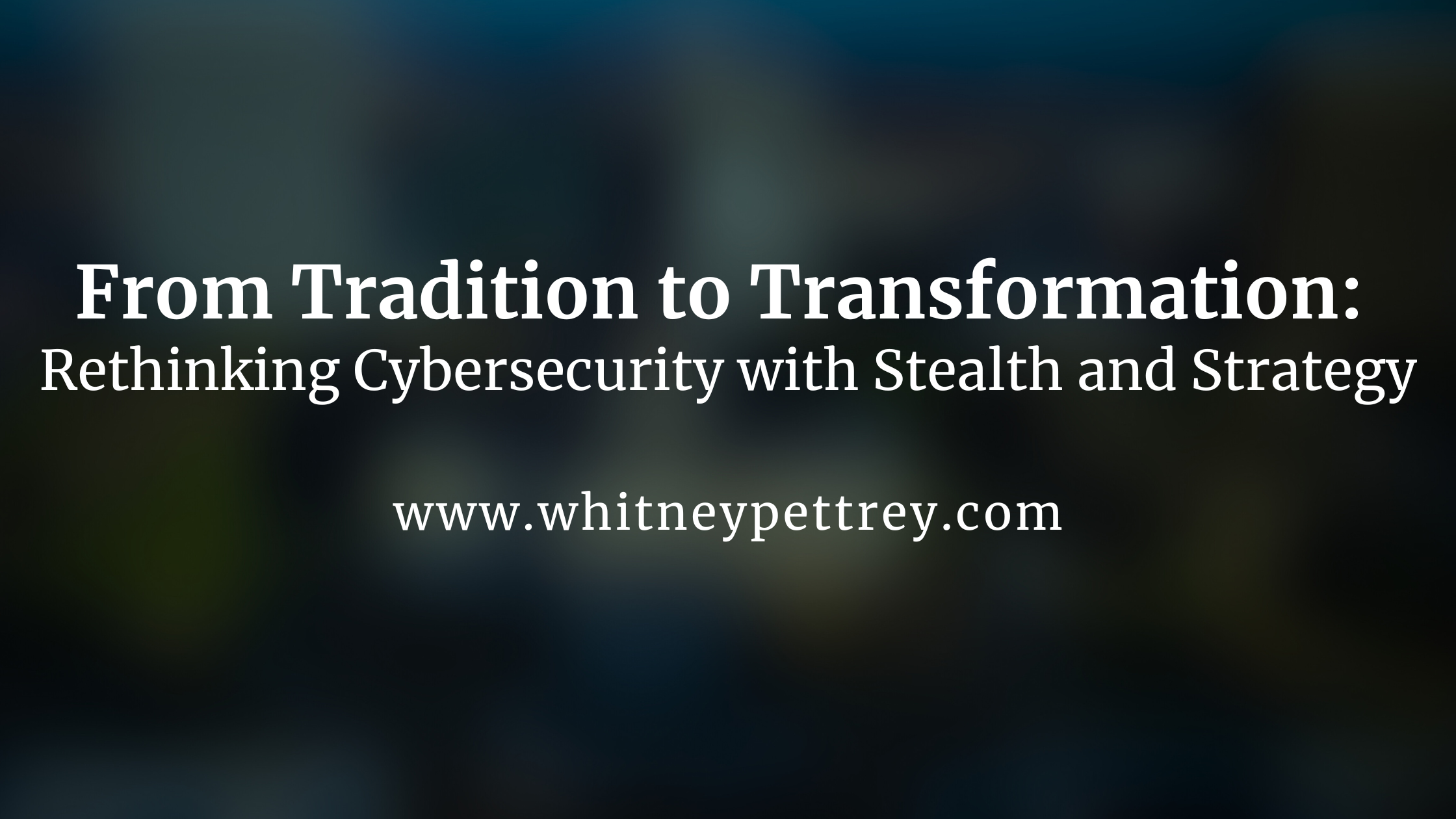Introduction: Outsmarting the Good Ol’ Boys
For decades, entrenched networks thrived on familiarity and repetition, assuming their time-tested methods would endure. However, history demonstrates that stagnation invites disruption, and those resistant to innovation are inevitably overtaken by forward-thinkers who prioritize precision, stealth, and strategy.
This dynamic is particularly evident in cybersecurity. Organizations clinging to reactive defenses and antiquated methodologies expose themselves to significant risks. Today’s threat actors are not mere opportunists; they are calculated strategists dismantling defenses with quiet precision and relentless efficiency. The cyber battlefield rewards those who can think three steps ahead, crafting adaptive and proactive strategies that outmaneuver adversaries.
By studying the principles behind silent corporate takeovers and applying them to cybersecurity, teams can evolve beyond outdated practices, adopting leadership models that thrive in an ever-changing digital landscape.
Lessons from Takeovers: A Blueprint for Cybersecurity
Legacy business models that faltered against nimble global competitors mirror the vulnerabilities of outdated cyber defense strategies.
The Pitfalls of Reactive Defenses: Organizations relying on “it’s worked so far” approaches are perpetually on the back foot, much like legacy businesses that failed to adapt to global competition.
The Silent Takeover: Sophisticated threat actors—from nation-states to organized cybercriminals—leverage stealth, speed, and precision to exploit systemic weaknesses. Their methods mirror the strategies of corporate disruptors, who quietly dismantle competitors before their vulnerabilities are fully understood.
The lesson is clear: Success in cybersecurity demands adaptability, innovation, and proactive strategies, leaving no room for complacency.
Gamification in Cybersecurity: From Reactive to Strategic
Thoughtfully implemented gamification transforms cybersecurity from a reactive process to an engaging and proactive practice. Its true power lies in subtlety—integrating competitive mechanisms seamlessly into workflows to inspire genuine behavioral change.
The Role of Gamification: More than badges and leaderboards, gamification embeds learning and competition into day-to-day operations, encouraging continuous improvement.
Stealth Gamification: This approach integrates competitive elements invisibly, fostering proactive behaviors without disrupting workflows. For example, defenders earn recognition for identifying unusual traffic patterns, while attackers refine their adaptive strategies through creative exploitation.
Gamification succeeds where outdated playbooks falter, reflecting the unassuming yet relentless tactics of silent corporate takeovers.
Simulation: The Training Ground for Adversarial Mastery
Simulations provide a controlled environment for teams to hone their skills, prepare for real-world adversaries, and strengthen collaboration.
Red Teams in Action: Simulations allow attackers to test techniques like lateral movement and malware insertion, mirroring adversaries’ creativity and adaptability.
Blue Teams in the Spotlight: Defenders refine their ability to detect patterns, prioritize threats, and respond effectively under pressure. Stealth gamification reinforces rapid anomaly detection and decisive mitigation.
Purple Team Collaboration: Joint simulations encourage strategy-sharing and foster adaptive defenses, bridging gaps between offensive and defensive units.
Simulations underscore the importance of evolution over stagnation. Just as traditional networks failed to foresee their obsolescence, cybersecurity teams must continuously innovate to counter emerging threats.
Thinking Like the Adversary: A Gamified Approach
Understanding an attacker’s mindset is pivotal for building resilient defenses. Gamification enhances this perspective, encouraging teams to think like adversaries.
Adversarial Tactics: Red teams employ stealth gamification to simulate adaptive attacks, while blue teams anticipate moves and strengthen resilience through iterative learning.
Scoring Innovation: Both teams gain recognition for innovative exploits (attackers) and rapid detection (defenders), fostering a culture of strategic creativity and adaptability.
This approach is not about playing games—it’s about mastering the adversarial mindset to predict and counter threats with precision.
Stealth Gamification in Everyday Operations
Embedding gamification into daily workflows ensures its impact is seamless and enduring.
Proactive Defense Routines: Assigning scores for actions like preemptive vulnerability patching fosters a culture of vigilance and accountability.
Fusion of Red and Blue Teams: Red teams simulate insider threats, while blue teams refine real-time responses, enhancing agility and coordination.
Subtlety is the cornerstone. Like the silent disruptors of corporate landscapes, stealth gamification drives improvement without overt disruption.
The Future: Advancing Gamification with AI and ML
As technology evolves, gamification becomes increasingly sophisticated, leveraging AI and machine learning to adapt dynamically.
AI-Driven Simulations: Training environments adjust difficulty based on team performance, ensuring continuous growth.
Predictive Gamification: Machine learning analyzes past simulations to guide teams in anticipating and mitigating emerging threats.
These advancements align cybersecurity teams with the tools and agility of leading corporate innovators, ensuring they remain competitive in a rapidly evolving landscape.
From Tradition to Transformation: The Call to Lead
Cybersecurity is at a crossroads. Organizations must abandon outdated practices and embrace transformative strategies to thrive.
Beyond Tradition: Success requires agility, precision, and the willingness to adopt cutting-edge methodologies.
From Complacency to Command: Gamified strategies foster innovation and resilience, equipping teams to lead in the cyber frontier.
This is more than a call to adapt; it is a call to lead. Organizations that harness stealth, simulation, and strategic gamification will not only defend but dominate in the cyber arena.
Call to Action: Shaping the Future of Cyber Defense
The time to act is now. To remain competitive, cybersecurity leaders must:
- Embed Innovation: Integrate stealth gamification to transform workflows into adaptive operations.
- Simulate to Dominate: Employ advanced simulations to refine strategies and anticipate threats.
- Forge Collaborative Excellence: Align red, blue, and purple teams to outpace adversaries through seamless collaboration.
The stakes are high, but the rewards are unparalleled. The future belongs to those who dare to innovate, leading the charge in resilience and dominance.
